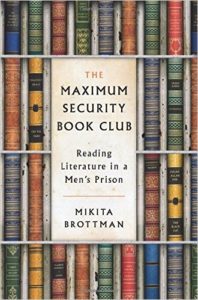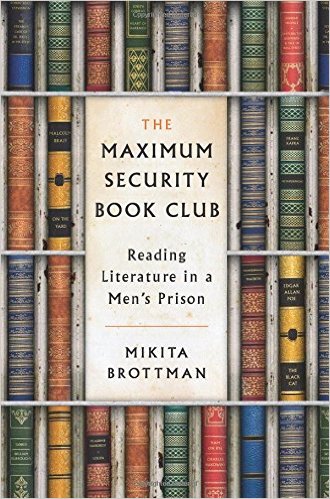
Nine male convicts squeeze into state-issued chairs and encounter great works of literature. One female English professor steers an erratic discussion, befriending a ragtag band of prisoners. This is the “Maximum Security Book Club.”
In her new novel, Mikita Brottman assesses her time at Maryland’s Jessup Correctional Institution book by book, recalling the conversations and observations accompanying each piece. Her honest account of prison is fascinatingly boring: the structure of her own work echoes the repetitive patterns and rhythms of the lives her convicts lead. This captivating monotony challenges readers with an exercise of compassion for those imprisoned by the tedium of life inside a penitentiary.
Brottman introduces her work just as she introduces the books she totes through the prison’s metal detectors — with background information on the author. Once a reckless, stick-it-to-the-man teen, Brottman confesses to a past that could have landed her behind bars, as well. With this narrow escape behind her, Brottman identifies with the prisoners she teaches and begins her book with the utmost honesty about her intentions: “I’ve long been preoccupied with the lives of people generally considered unworthy of sympathy, especially those who’ve committed crimes with irreversible moral implications, like murder.”
Throughout her novel, Brottman unfolds the complicated stories behind the people — murderers, rapists, addicts, and the like — who fascinate her. Day-Day is a tattoo-stained, Shakespeare-loving ex-con. Steven steals the show as the group’s chief contributor and eternal optimist. Charles pipes up from time to time with wisdom from a lifetime of experience.
Together, these men embody their unique stories, but they all attend the book club for the same depressing reason: they just need something to do.
“Talking to the men about books had made me see very clearly that, for most of the prisoners, reading was just a way of passing time. It wasn’t as expensive or damaging to their physical health as cigarettes or suboxone would have been but, in the end, perhaps it was just as futile, and without the high,” Brottman writes.
Thumbing through “Heart of Darkness,” “Ham on Rye,” and “Junkie,” to name a few, helps to pass the hours convicts spend waiting in lines, bumming around recreational areas, or sitting through days, even weeks, of random lockdown in their cells.
Brottman doesn’t just describe this life of perpetual waiting. Her organization and presentation of the facts, observations, and anecdotes she collects at the prison express the inherent, and maybe undignified, boredom that jail presents.
Chapter by chapter, book by book, meeting by meeting, Brottman plods through the world of maximum security. She divulges facts, conversations, experiences, and opinions in a slow buildup of coherence, without any semblance of an overarching plot. Small anecdotes reappear, woven throughout the book when relevant.
Ironically, this book about books tells no real story.
This gives way to fascinating detail with very little context. As the prisoners wait for something to happen — a meal to start, a lover to call, a sentence to lift — the readers wade through pages until Brottman graces them with a revelation to make sense of all the details.
When reading the “The Strange Case of Dr. Jekyll and Mr. Hyde,” for example, Brottman mourns the two-faced life of addicts. In light of “Macbeth,” she taps into a new side of the masterpiece as she follows the plot alongside convicted murderers. Through Edgar Allen Poe, Brottman hears grisly memories brought on by haunting poetry.
These anecdotes, while arresting, give readers an honest look inside a penitentiary. Peppered by gripping moments of narrative, enhanced by a dynamic cast of characters, and narrated by the surprisingly unpretentious thoughts of an English professor, this novel takes on what it portrays — it is a literary prison.
Although Brottman’s project to enlighten a few prisoners with excellent literature, her main achievement is allowing a much larger group of people to step behind bars for 392 pages.

